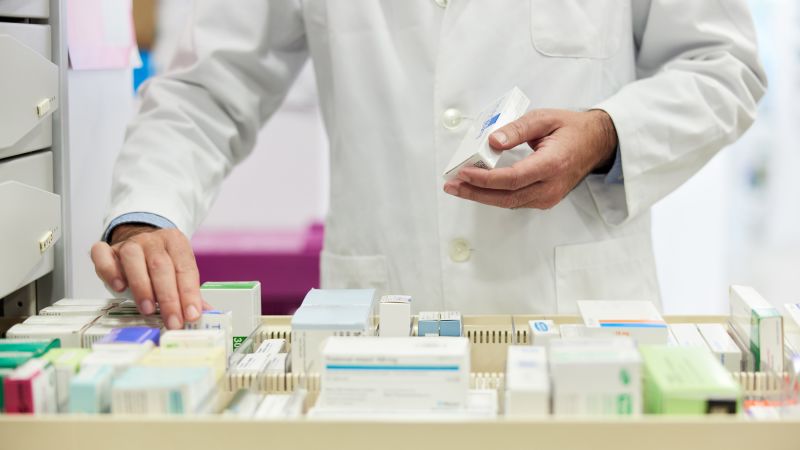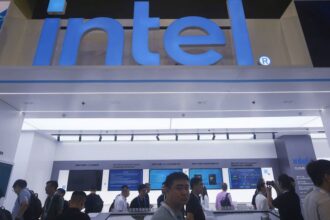Retail pharmacists and technicians around the country say they’re overworked, underpaid and fed up.
Now some are walking off the job.
Pharmacy staff at Walgreens locations across the country called out of work on Monday to protest harsh working conditions, leaving some stores closed or critically understaffed. Organizers told CNN that hundreds of workers participated in the organized action, which is expected to last through Wednesday.
The walkouts come just two weeks after dozens of pharmacy employees at CVS, America’s largest retail pharmacy chain, walked off the job in Kansas City.
Here’s what pharmacy workers fighting for:
Monday’s walkout wasn’t easy for Walgreens’ employees.
Employees understood that they could be leaving customers without immediate access to some medications and that they were canceling long-scheduled vaccination appointments.
But this was their last-resort option, workers told CNN. They said increased demand for prescriptions, shots and other services without sufficient staff to fulfill the orders made it nearly impossible to do their jobs properly and created potentially unsafe conditions for customers.
“They didn’t feel confident that they could provide care in a safe environment,” said Michael Hogue, CEO of the American Pharmacists Association, who traveled to Kansas City to meet with CVS executives, Walgreens leadership and walkout organizers last week.
A 2022 National Community Pharmacists Association survey showed that nearly 75% of respondents felt they did not have enough time to safely perform clinical duties and patient care.
Stores often operate with just one pharmacist behind the counter for a 12 hour shift.
“Pharmacists are so overwhelmed and worried that they’re going to make a mistake. It’s so easy to make a mistake under those conditions,” said Shane Jerominski, a pharmacy labor advocate who spent a decade working at chain pharmacies including Walgreens and now manages an independent pharmacy.
In a statement, CVS acknowledged stores – and the health care industry overall –are understaffed. CVS said it has taken measures to ensure appropriate staffing levels in stores, and the company said it’s developing an action plan to improve patient care.
“Patient safety is our highest priority,” CVS spokesperson Amy Thibault told CNN on Tuesday. “Safeguards to support patient safety are integrated throughout our prescription workflow, and our pharmacists and pharmacy technicians receive extensive training on all pharmacy systems,” she said.
Representatives from Walgreens did not immediately respond to requests for comment.
Walgreens on Monday said it understands “the immense pressures felt across the US in retail pharmacy right now,” according to Fraser Engerman, senior director of external relations at Walgreens. The company is “engaged and listening to the concerns raised by some of our team members.”
CVS, Walgreens, Walmart, Amazon and a number of other stores are encouraging customers to seek non-emergency care at their locations. That’s gaining traction, according to Wolters Kluwer’s Pharmacy Next survey. More than 80% of respondents said they trust a pharmacist, nurse, or nurse practitioner to diagnose minor illnesses and prescribe medications to treat them.
“There’s been tremendous consumer demand for those services,” Dr. Peter Bonis, the chief medical officer at Wolters Kluwer Health, told CNN.
That means there’s a lot of money to be made.
But retail pharmacies haven’t done much to address the evolving demands on employees, he said. That puts a tremendous amount of strain on the existing staff.
“I’m not wholly surprised that there is this burnout phenomenon,” he said.
Some CVS and Walgreens employees told CNN that an increased focus on vaccinations from management has added to their workload and made it more difficult to focus on filling prescriptions and customer care.
“Walgreens and CVS have turned into a vaccination clinic first and a pharmacy second,” said Jerominski. “Because immunizations are so profitable, filling prescriptions is almost an afterthought.”
One Walgreens technician told CNN that they now spend their entire day in the “shot room” jabbing arms. h
“That’s the one thing that’s driving us absolutely bonkers,” they said, “the fact that management cares way more about us giving vaccines than anything else.”
The technician is the only immunizer on staff and earns less than $20 per hour.
More staff and better pay
It all comes down to staffing, said Hogue.
There are currently about 30,000 open retail pharmacy technician positions in the United States and about 7,500 open pharmacist positions, he estimated.
“Part of it is that pharmacy technician pay is abysmal,” said Hogue. “In some states pharmacy technicians are making minimum wage, and it’s a very stressful environment.”
That means that young people don’t see pharmacy tech as a viable career path and turnover is high.
The problem isn’t a lack of pharmacists. Pharmacy schools have expanded rapidly over the past few years, producing plenty of new graduates. Plus, a recent posting for a pharmacist role at a VA hospital in Kansas brought in about 700 applications, Amanda Applegate with the Kansas Pharmacists Association told CNN.
The problem, she said, is that many pharmacists don’t want to work for a retail pharmacy.
Every pharmacy needs at least one pharmacist on staff to open, he said, and because staffing is so limited, it’s not uncommon for a pharmacy location to shut down entirely when a pharmacist falls ill or isn’t able to make it in.
Pharmacy staff gets yelled at. A lot.
The pharmacy desk is often the final port of call for patients navigating a confusing and frustrating medical system.
The American public and the average patient doesn’t really understand what goes in to filling a prescription, said Jerominski.
“They just think we’re taking pills from a big bottle and putting them into a little bottle,” he explained, channeling a famous Jerry Seinfeld joke. But pharmacists also have to assess what medications a customer is taking, make sure there will be no interactions and advise them about side effects and best practices, he said.
When that’s rushed through or done haphazardly by an exhausted employee “a lot can go wrong,” he said.
High prices, long waits and medicine shortages don’t help the situation, either.
But pharmacists say that management sets them up for negative interactions with customers by stretching them thin and taking away time that should be spent on customer care.
When pharmacy workers bring their complaints to management, they sometimes fall on deaf ears, found a survey conducted last year by the American Pharmacists Association the National Alliance of State Pharmacy Associations.
“There is no open mechanism for pharmacists and pharmacy personnel to discuss workplace issues with supervisors and management; if they try, the discussion is not welcomed or heard,” the groups wrote.
“The sad part is it came to this,” the organizer of the CVS walkouts told CNN. “I’ve been asking and asking for more support for 10 years and no one listened. We had to stop asking and take drastic measures to force the issue.”
CVS representatives told CNN that “leaders are actively engaged with our pharmacists to directly address concerns they’ve raised, and we’re providing ongoing updates on the progress made directly to our pharmacy teams. We’re engaging in a continuous two-way dialogue to share how we’re meeting the commitments we’ve made to our teams and to continue to hear their direct feedback.”
Read the full article here










